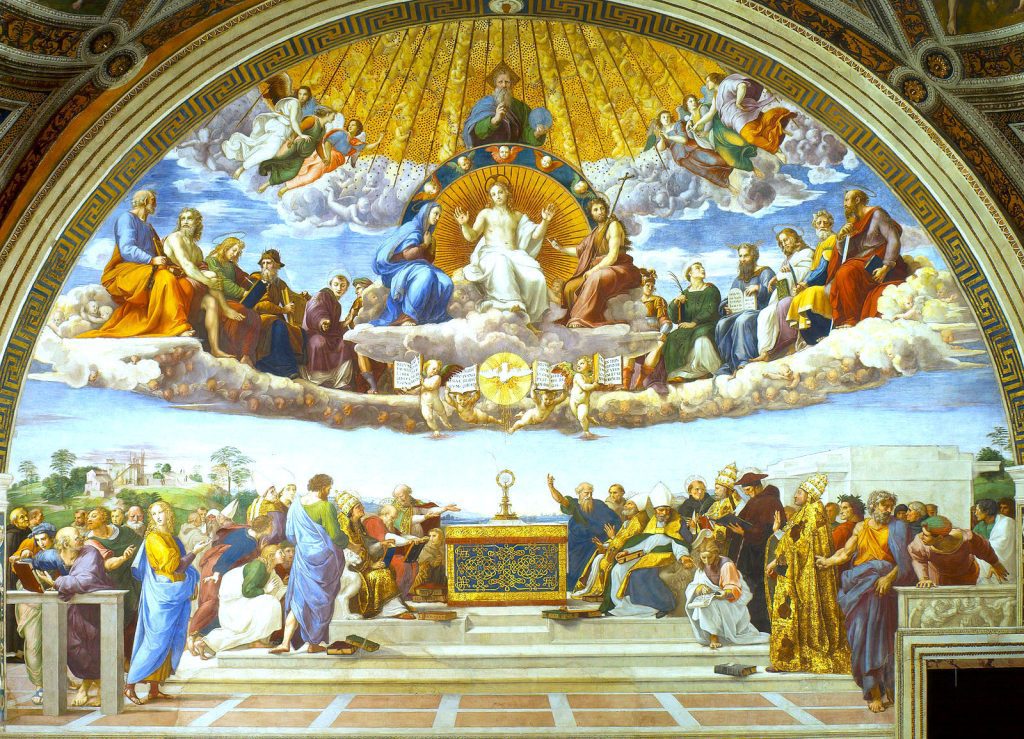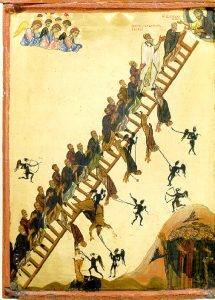. A coincidence, or Direction from Jesus, that there are 153 “Hail Mary’s” in a Rosary?
~
Question 1. “Why is the number 153 so important to Catholics?”
Answer: “John 21: 1-14 tells us that His Disciples caught ‘153 large fish’ after they obeyed Jesus’ instructions.
Simon Peter said to them, ‘I am going fishing.’ . . . but that night they caught nothing. . . When it was already dawn, Jesus was standing on the shore; . . . .
‘Jesus said to them, ‘Children, have you caught anything to eat?’ They answered him, ‘No.’ So he said to them, ‘Cast the net over the right side of the boat and you will find something.’ These First Catholics were rewarded for obeying Jesus! So Simon Peter went over and dragged the net ashore full of one hundred fifty-three large fish. Even though there were so many, the net was not torn.’”
~
Question 2: “Why is 153 is a remarkable number?”
Answer: “St. Jerome said that it represented the 153 types of people who would be saved, knowing that ‘He called them by name.’”
~
Question 3: “Did other Church Fathers have more ideas about ‘153’?”
Answer: “Yes! St. Augustine presents another idea in his Tractates: “Augustine, (Tractates 122 on this Gospel) takes the sum of all the digits to and including 17 as amounting to exactly 153.
‘For if you add 2 to 1, you have 3, of course; if to these you add 3 and 4, the whole number makes 10; and then if you add all the numbers that follow up to 17, the whole amounts to the aforesaid number (153)'”
~
Question 4: “Did ‘153’ come up anywhere else?”
Answer: “A man with the Biblical Name of Colossians F. Roberts found that “amongst all whom were directly blessed by Christ there are recorded exactly 153 special individual cases, subtracting duplications in the different Gospels.’”
~
Question 5: “That is amazing! Are there any other miraculous coincidences about that number?”
Answer: “‘153’ gets complicated! You may want to skip to Question 6! The number 153 is the 17th triangular number. 153 is also the sum of the first five positive factorials. As a triangular number, 153 is the sum of the first 17 integers, and it also the sum of the first five positive factorials: 1! + 2! + 3! + 4! + 5!
And, 153 is also a hexagonal number. It is one of six known truncated triangle numbers, meaning 1, 15, and 153 are all triangle numbers.
The distinct prime factors of 153 add up to 20, and so do the ones of 154, hence the two form a Ruth-Aaron pair. Since 153 = 13 + 53 + 33, it is a 3-narcissistic number. 153 is also the smallest number which can be expressed as the sum of cubes of its digits. It is also a Friedman number, since 153 = 3 × 51, and a Harshad number in base 10, being divisible by the sum of its own digits. The Biggs–Smith graph is a symmetric graph with 153 edges, all equivalent.”
~
Question 6: “That’s more than I want to know! Is there anything about 153 that everyone can see?
Answer: “Yes! When we say a Rosary, we repeat ‘Hail Mary, Full of Grace, The Lord is with Thee. Blessed are Thou among women and Blessed is The Fruit of your womb, Jesus. Holy Mary, Mother of God, pray for us sinners, now, and at the hour of our death. Amen.’ ”
~
Question 7: “How many times do Catholics say a ‘Hail Mary’ every time we say a ‘Rosary’?”
Answer: “Catholics repeat that prayer 153 times. Like The Apostles, our ‘net is filled’, but it is never ‘torn’!”
~
. . . . . . . . . . . .
. . . . . . . . . . .
Simple Reasons to be Catholic. catholicfundamentalism.com
We can find interesting ideas in this, and other free books: https://catholicfundamentalism.com/the-book-of-revelation
If you like the no-cost downloads, please consider a donation to your Parish or favorite Catholic Charity. Consider sharing this with e: catholicfundamentalism.com
May all be blessed to get and read “The Diary of St. Faustina”. It is the most important book of at least the last hundred years.






